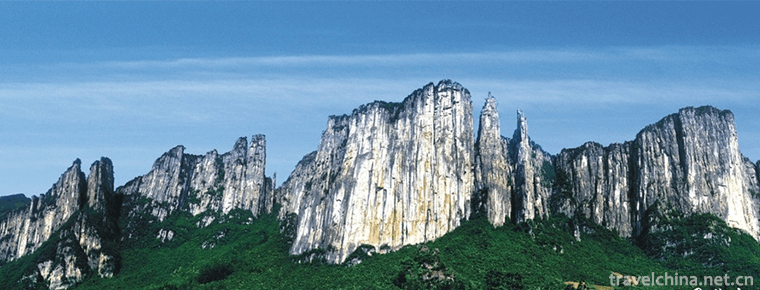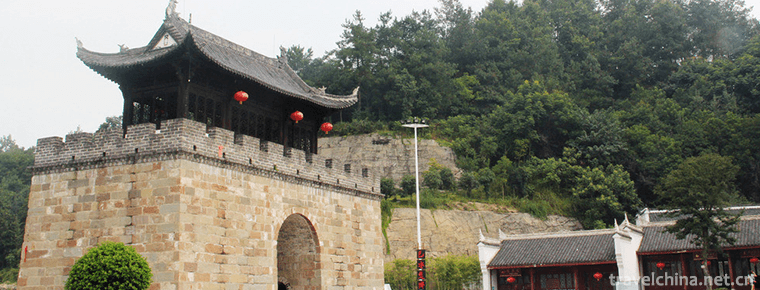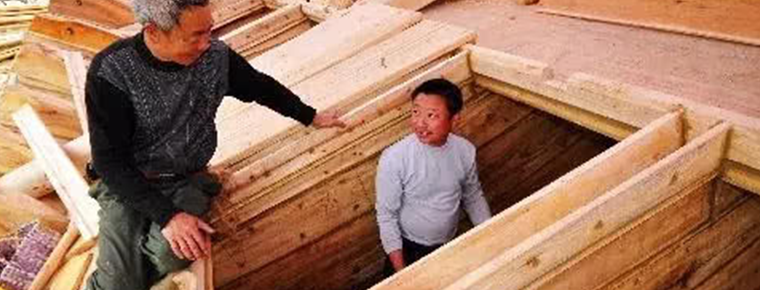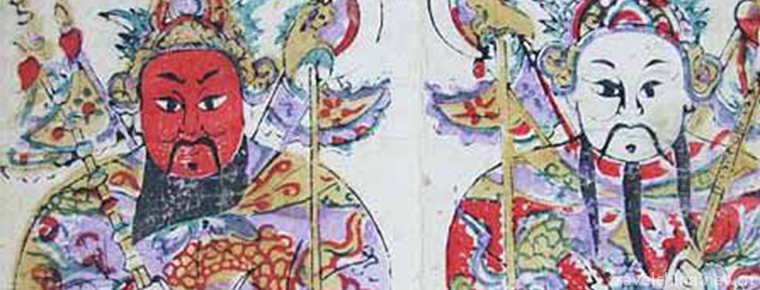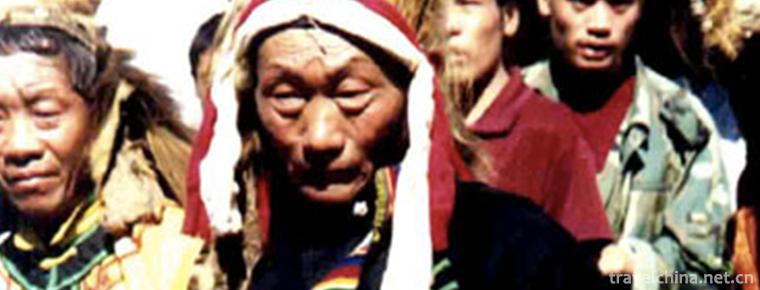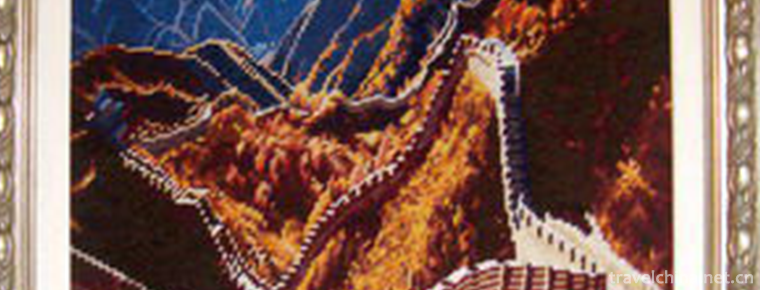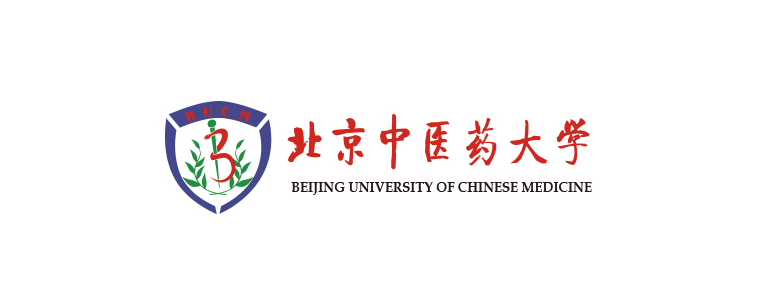GUI Opera
GUI Opera
Gui Opera (commonly known as Gui Opera or Gui Ban Opera), Guangxi local traditional drama, one of the national intangible cultural heritage.
Gui Opera originated in the middle of Ming Dynasty. Kun Opera spread to Guangxi in the late Ming and early Qing Dynasties. Gao Opera and Yiyang Opera were introduced one after another. Several kinds of tunes merged to form Gui Opera with beautiful tone and harmonious development. Guiju opera is exquisite and lively, with the help of facial expression and body posture to convey emotions, focusing on the delicate and life-rich performance techniques to shape characters.
On May 20, 2006, Guiju Opera was approved by the State Council of the People's Republic of China to be included in the first batch of national intangible cultural heritage list, with the heritage number IV-37.
historical origin
Guiju opera is the main local opera in Guangxi. It has a long history. It began in the middle of Ming Dynasty. At the end of Ming Dynasty and the beginning of Qing Dynasty, there were Kun Opera in Guangxi, and then Gao Opera and Yiyang Opera were introduced one after another. They merged into each other to form five kinds of Gui Opera with high, Kun Opera, Blow Opera and Miscellaneous Opera.
In the late Ming and early Qing Dynasties, the chambers of Kunshan, Yiyang and Ran Tan were popular in Guilin.
During the reign of Qianlong in Qing Dynasty, Qiyang Ban of Hunan frequently performed in Guilin.
During the reign of Qing Daoguang, the earliest Guiju Opera troupe was established, with famous classes such as Sanhe and Sanqing, which sang a variety of voices, followed by classes such as Ruihua, Lao Renhe, Sheng, Kabin and Jinhua.
Since 1882, Guilin has witnessed the emergence of Gui Opera classes such as Baohua, Qunying, Cuihua and Lanbin Xiaoshe. Since then, Gui Opera and Qi Opera have gradually separated. However, Gui Opera and Qi Opera artists have performed in groups and hired teachers to teach each other their skills. Because of the proximity of the theatre and the similar pronunciation, Qi and Gui artists have been performing in the same stage for a long time, which has deeply affected the voice and acting skills of Gui Opera and made its development more and more mature.
In 1896, Tang Jingsong had a special hobby for Gui Opera, so he paid attention to the creation and research of Gui Opera, set up the "Spring Class of Guilin", and compiled the script personally, instructed the artists to perform, in order to entertain people with Gui Opera. He compiled 40 kinds of Qiting Zaju, which spread the repertoire of Guiju opera and promoted the development of Guiju opera art.
In 1902, Guilin established the first theatre Jingfu Garden, followed by Heyuan and Yiyuan Theatres. Since then, Gui Opera has gradually entered the theatre to perform regularly.
In 1912, the first Gui Opera Female Course Banfu Zhenyuan was founded. Later, a large number of actresses were trained, especially the two female classes of Heyuan A and B, which had a great influence on the development of Gui Opera. After that, there were more than 30 male and female Kobans, which trained many talents for Guiju Opera.
Cultural characteristics
Repertoire
Gui Opera repertoire is quite rich, there are "big and small books mixed out of 800" said. Because its emergence and development are closely related to Hui Opera, Han Opera, Hunan Opera and Qi Opera, its repertoires are mostly similar to those of Pihuang's brothers.
Sound chamber
Guiju opera is mainly composed of "ballistic cavity", which includes "high cavity", "Kun cavity", "blowing cavity" and miscellaneous tunes. Its "bullet chamber" can be divided into "South Road" (Erhuang) and "North Road" (Xipi). Their Anti-tone forms of "pudendum" and "back bow" are self-contained.
Projectile cavity
The ballistic chamber is divided into two major departments, namely "Erhuang" on the South Road and "Xipi" on the North road. The Anti-tone forms of "Yinpi" and "Backbow" in the performances of Gui opera characters are self-contained. North Road is grand and grand, South Road is euphemistic and depressing; the pubic skin is slightly sad and sad, while the back bow is longer than the expression of tragic and tragic mood.
High cavity
Originated from Yiyang tune, it is a kind of music plate composed of music plates. The tune is high-pitched and solemn. Its singing feature is that it only uses gongs and drums to accompany and voice to help the tune, without using orchestral instruments.
Kunqiang
Kunqu Opera, or Kunqu Opera, has a euphemistic and low melody and a stricter rhythm. Blow tune is one of the main tunes of Hui Opera. In the late Ming and early Qing Dynasties, Anchun or Anqing tunes were played in Huizhou, with different tunes for men and women. The tunes were dignified and elegant for men, fluent and lively for women, accompanied by flute, mainly singing, combining singing and reading, and the tunes were humorous, light and often inserted into the tunes.
a singing style of Peking opera with flute accompaniment
Opera tune is one of the main tunes of Hui Opera. The early tunes of Kun and Yiyang tunes, which were fine-tuned in late Ming and early Qing dynasties, were influenced by the Western Qin tunes, and formed a new tune in the area of Zhongyang Shipai. They are called "Zhongyang Tune", "Shipai Tune" and "Anqing Bangzi", "Luhua Bangzi".
Music for voices in a Chinese Opera
Gui opera is sung in Guilin dialect with beautiful tone and elegant tone. The performance is simple and delicate, and the singing is euphemistic and moving.
accompaniment
The accompaniment Orchestra of Guiju opera is also divided into literary field and martial field like other kinds of pihuang operas. The former uses two strings (like Beijing Hu), moon qin, three strings, huqin and flute, bang flute, suona, suona (that is, sea flute) and other instruments, while the latter uses crisp drums (plate drums), battle drums, big and small hall drums, plate (tie plate), gongs, cymbals, cymbals, cloud gongs, stars, bells and so on.
Foot color
The roles of Gui Opera are divided into four categories: Sheng, Dan, Jing and Ugly. Life is divided into birth, end, outside, small and martial arts; life is divided into death, occupation, paste and husband; life is divided into pure, vice and last pure; ugliness is divided into clowns and clowns.
perform
Guiju opera performance focuses on workmanship, focusing on the delicate and life-rich performance techniques to shape characters. Even martial arts are mostly written.
Representative repertoire
Gui opera has a large number of repertoires, including "eight hundred large and small copies", such as "Striking Golden Branches", "Fire Down Mountain", "Broken Bridge Club", "Grabbing Umbrella", "Mu Guiying", "Nao Yan Fu", "Hefeng Skirt", "Li Kui Capture Fish", "Sishui Nagang", "Paifeng Rod", "Liu Qingti", "Pirate Armor" and so on.
Distribution area
Guiju opera is popular in Guilin, Liuzhou, Hechi, Nanning and other cities, and in the northern part of Wuzhou city and countryside where "Mandarin" is spoken. It is deeply loved by the people of Bagui.
Inheritance and protection
Inheritance value
Gui Opera has accumulated more than 800 traditional operas in the historical process of its development, which is an important part of Guilin's local cultural heritage. In the new period, Gui Opera will make greater efforts to innovate and make new contributions to the development of local culture.
Inheritance status
Due to various reasons, Guiju opera has been in an endangered situation, the loss of tradition, the loss of talent, the loss of repertoire and skills, and the difficulty of folk performances. The original artistic characteristics of Guiju opera are gradually fading away in this process. Measures need to be taken to discover, rescue and protect Guiju opera in time, so as to revitalize this ancient drama which is on the verge of extinction.
Inheriting characters
Qin Caixia, female, Han nationality, born in February 1933, is a national first-class actor from Guilin, Guangxi Province. The second batch of national intangible cultural heritage projects are representative inheritors of Guiju Opera. Guangxi Zhuang Autonomous Region declares.
Zhou Xiaolankui, male, Han nationality, born in November 1933, is a national first-class actor from Guilin, Guangxi. He is the representative inheritor of Guiju Opera in the second batch of national intangible cultural heritage projects and declared by Guangxi Zhuang Autonomous Region.
Luo Guixia, female, Zhuang nationality, born in August 1943 in Guilin, Guangxi, is the representative successor of Guiju Opera in the fourth batch of national intangible cultural heritage projects. Guangxi Zhuang Autonomous Region declares.
Zhang Shuping, female, Han nationality, representative successor of Guiju Opera in the fourth batch of national intangible cultural heritage projects, Guangxi Zhuang Autonomous Region declared.
protective measures
In 1938, Dr. Ma Junwu, president and educator of Guangxi University, set up the Guangxi Drama Improvement Association in Guizhou, and Ouyang Yuqian applied for the reform of Guizhou Drama. With the belief that "Gui Opera is an excellent local opera and can not be regarded as an idle time", he founded an experimental Gui Opera troupe, opened a Gui Opera school, prepared a new performing theatre and trained a number of new Gui Opera actors.
In the 1980s, Guilin Opera School was founded. A large number of old artists of Gui Opera were hired as teachers. Under their hard training, the new seedlings of Gui Opera thrived and grew up.
social influence
Important performance
From February 15 to May 19, 1944, the delegation of Gui Opera and Gui Opera participated in the first Southwest Drama Exhibition held in Guilin.
In September 1952, the Gui Opera delegation participated in the performance of the first opera viewing and exposition held in Wuhan.
In May 1956, Guangxi Gui Opera Art Troupe performed in Nanning Gui Theatre
From July 1 to August 15, 1965, the Gui Opera delegation attended the Central South District Theatre Visiting and Performing Conference in Guangzhou.
Honorary commendation
In 1952, Yinxi won the first prize for acting Sun Yubo in "Picking up Jade Bracelets" at the first National Opera Performance Conference held by the Ministry of Culture.
In 1952, Xie Yujun won the second prize for personal performance at the first National Opera Festival.
In 1952, Liu Wanchun and Qin Zhijing won the third prize for individual performance at the first National Opera Festival.

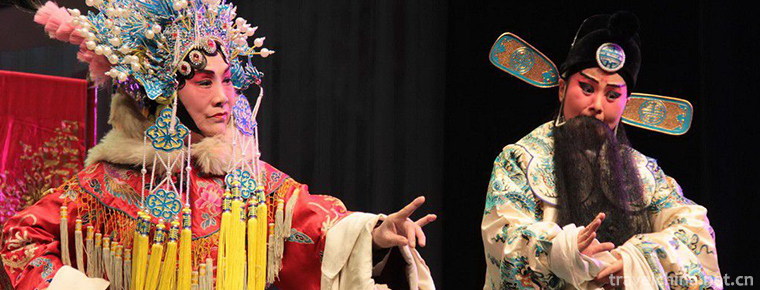
-
Enshi Grand Canyon
Enshi Grand Canyon is located in Tunpu Township and Banqiao Township, Enshi City, Hubei Province. It is located at the junction of Hunan, Chongqing and Hubei provinces. It is the most beautiful sectio.
Views: 156 Time 2018-12-12 -
Quyuan Hometown Tourist Area
The cultural tourist area of Quyuan's hometown is located in Fenghuangshan, Zigui County, Yichang City, with a total area of 33.3 hectares in the north, Gaoxia Pinghu Lake in the north.
Views: 136 Time 2018-12-12 -
Traditional Wooden Ship Manufacturing Techniques
Fuyang has a long history of shipbuilding. As early as the Tang Dynasty, water transportation was glorious. Fuyang Lingqiao wooden boats are mainly distributed in towns along the Fuyang River, especia.
Views: 333 Time 2019-04-21 -
Ear song
"Earsong" is also known as "Decorative Red". In Bai language, "ear" means simple son, and "song" means dance. It originated in the mountainous Bai nationality i.
Views: 199 Time 2019-04-28 -
Liang Ping Wood New Year Print
Liangping Wood Printing New Year Painting belongs to Liangping's "Three Wonders" (Bamboo Curtain, New Year Painting and Lantern Opera), which is a kind of painting art drawn by the people in.
Views: 171 Time 2019-05-13 -
Pipa Art
In the history of modern Chinese traditional folk music, there are two schools of pipa: the "Shanghai School" (Pudong School) and the "Zhejiang School" (Pinghu School). The Pipa ar.
Views: 102 Time 2019-06-09 -
Qiangge war
The Battle of the Qiang is the most famous one among the folk epics of the Qiang people. It describes the history of the ancestors of the Qiang people who had experienced hardships and hardships.
Views: 164 Time 2019-06-10 -
woolen needlepoint tapestry
Cashmere embroidery, also known as wool embroidery, is one of the emerging traditional arts and crafts in Shanghai. It is a kind of art and crafts crystallization embroidered on special mesh linen clo.
Views: 101 Time 2019-06-14 -
Production Techniques of Black Copper Walking Silver
The process of making silver from black copper is very complicated. Usually, it has to go through nearly 20 processes, such as refining copper, blanking, pattern carving, silver walking, forming, poli.
Views: 144 Time 2019-06-29 -
Beijing University of Chinese Medicine
Beijing University of Traditional Chinese Medicine is a national key university with traditional Chinese medicine as its main subject. It is directly under the management of the Ministry of Education..
Views: 131 Time 2019-09-22 -
Animal resources in Meishan
There are many species of wild animals in Meishan City, and the floristic composition is more complex, mainly subtropical forest animals. There are 469 species of terrestrial wild (vertebrate) animals, including 91 species of mammals, 18 orders, 27 families, 65 genera, .
Views: 331 Time 2020-12-18 -
Education in Yibin
In 2019, there will be 11000 students enrolled, 50900 students and 13600 graduates. There are 4 graduate training units, 393 graduate students, 918 students and 68 graduates. There are 17000 students in adult colleges and universities. 43500 pe.
Views: 239 Time 2020-12-18
